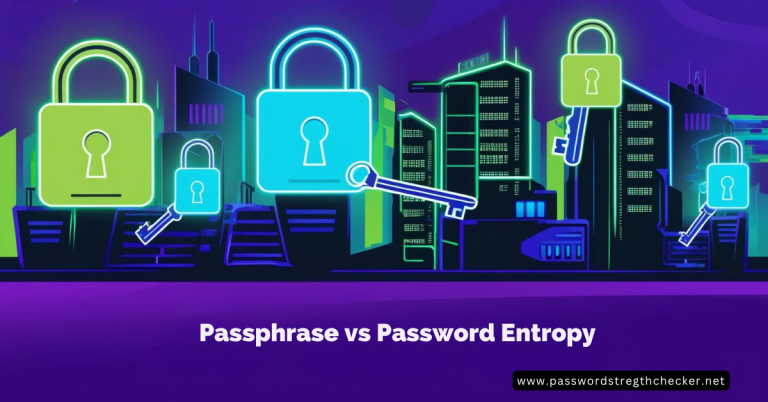Book Appointment Now

How to Migrate Password Manager: A Complete Guide for 2025
Picture this: You’re staring at your screen, realizing you need to migrate your password manager after using the same one for years. Trust me, I’ve been there! Just last month, I helped my colleague Sarah through this exact process, and her first reaction was, “Can’t I just write everything in a notebook?” (Spoiler alert: definitely not!). When you need to migrate password managers, it’s crucial to do it right – after all, we’re talking about the keys to your entire digital life here.
Did you know that 83% of people reuse their passwords across multiple accounts? That’s exactly why having a reliable password manager is so important. Whether you’re making the switch due to security concerns, rising costs, or just hunting for better features, I’ll walk you through the entire migration process. As a cybersecurity specialist who’s helped countless users migrate password managers (and learned from quite a few mishaps along the way!), I know exactly what works and what doesn’t.
Why Migrate to a New Password Manager?
I remember sticking with my old password manager for years, even though it drove me crazy with its clunky interface. Sometimes we need a push to make a change, right? There are several compelling reasons to consider switching your password manager, and trust me, the temporary hassle is worth the long-term benefits.
Think of your password manager like a digital house – sometimes you need to move to a better neighborhood with better security and amenities. Here’s what usually drives people to make the switch:
- Enhanced Security Features: Many modern password managers offer advanced encryption and security features
- Better Value for Money: New competitors often provide more features at lower prices
- Improved User Experience: Newer interfaces and faster performance can save you time daily
- Cross-Platform Compatibility: Better sync options across devices and operating systems
- Advanced Sharing Features: Improved options for sharing passwords with family or team members
Preparing for Password Manager Migration
Before we dive into the actual migration, let’s talk preparation – it’s like packing before moving houses. Last year, I rushed into migrating my passwords and forgot to back up my data first (rookie mistake!). Spent a whole weekend fixing that mess. Here’s what I’ve learned about proper preparation.
First things first, you’ll want to do a digital spring cleaning:
- Run a password audit to identify and update weak or reused passwords
- Remove any outdated accounts you no longer use
- Organize passwords into logical categories (work, personal, finance, etc.)
- Verify that all stored information is current and accurate
- Create a secure backup of your existing password vault
Step-by-Step Migration Process
Now comes the fun part – actually moving your passwords! Think of this like following a recipe – each step needs to be done in the right order. The first time I did this, I jumped straight to importing without checking the file format. Spoiler alert: it didn’t go well!
Here’s my tried-and-tested process:
1. Exporting Your Data
- Open your current password manager’s settings
- Look for the “Export” or “Backup” option
- Choose the right format (CSV is usually your best bet)
- Save the file in a secure, temporary location
2. Importing to Your New Manager
- Create and verify your new password manager account
- Find the import option in settings
- Select the appropriate import format
- Follow the platform-specific import wizard
- Verify that all data is transferred correctly
Common Migration Methods Between Popular Managers
You know what’s interesting? Each password manager handles migration a bit differently. It’s like learning a new dialect of the same language. I’ve helped users migrate between pretty much every major platform out there, and I’ve noticed some patterns.
Let me break down the most common migrations I’ve helped with:
LastPass to Bitwarden Migration
- Export from LastPass:
- Navigate to Advanced Options
- Select “Export”
- Choose CSV format
- Save file securely
- Import to Bitwarden:
- Go to Tools
- Select “Import Data”
- Choose “LastPass” as the source
- Upload your CSV file
1Password to Dashlane Migration
- Export from 1Password:
- Open 1Password settings
- Select “Export All”
- Choose 1PIF format
- Store securely
- Import to Dashlane:
- Access Import feature
- Select 1Password option
- Upload 1PIF file
- Confirm data transfer
Security Best Practices During Migration
Here’s something most guides won’t tell you – the migration process is actually when your passwords are most vulnerable! I learned this the hard way when helping a client migrate their business passwords. We had used an unsecured network, and well… let’s just say it was a teaching moment!
Follow these essential security practices during migration:
- Use a secure, private network for all transfers
- Enable two-factor authentication on both password managers
- Never leave exported files on your desktop
- Use encrypted storage for temporary files
- Delete exported files immediately after successful migration
Post-Migration Verification and Cleanup
You’d be surprised how many people skip this crucial step! After helping dozens of users migrate their password managers, I’ve developed a foolproof verification process:
- Essential Verification Steps:
- Test login for your most critical accounts
- Verify all secure notes are transferred correctly
- Check that file attachments are accessible
- Confirm all credit card information is accurate
- Test password generator functionality
- Cleanup Tasks:
- Remove duplicate entries
- Update outdated passwords
- Delete temporary export files
- Revoke access to old password manager
- Update browser extensions
Troubleshooting Common Migration Issues
Even with perfect preparation, sometimes things go wrong. Just last week, I helped a friend whose special characters got mangled during migration. Don’t worry – there’s always a solution!
Common Issues and Solutions:
- Missing Passwords:
- Check export file format compatibility
- Verify file wasn’t corrupted during transfer
- Ensure all categories were included in export
- Character Encoding Problems:
- Re-export using UTF-8 encoding
- Try alternative export formats
- Manual entry for problematic passwords
- Sync Issues:
- Force sync on all devices
- Log out and back in
- Clear browser cache
- Reinstall mobile apps
Conclusion
Migrating to a new password manager doesn’t have to be overwhelming! By following this comprehensive guide, you can safely transfer your digital life without compromising security. Remember to take your time with the verification process – it’s better to spend an extra hour checking your migration than to lose access to important accounts.
From my experience helping countless users make this transition, the key is to be methodical and patient. Start with backing up your current password vault, and follow our step-by-step process for a smooth transition. Trust me, once you’re settled into your new password manager, you’ll wonder why you waited so long to make the switch!
Have questions about migrating your specific password manager? Drop them in the comments below, and I’ll help you out! After all, we’re all in this digital security journey together.
Pro Tip: Keep this guide handy during your migration process – you might want to reference it at each step!



